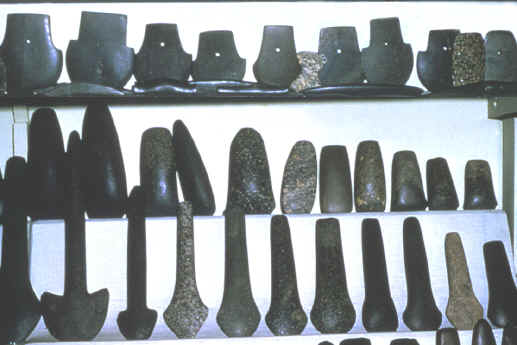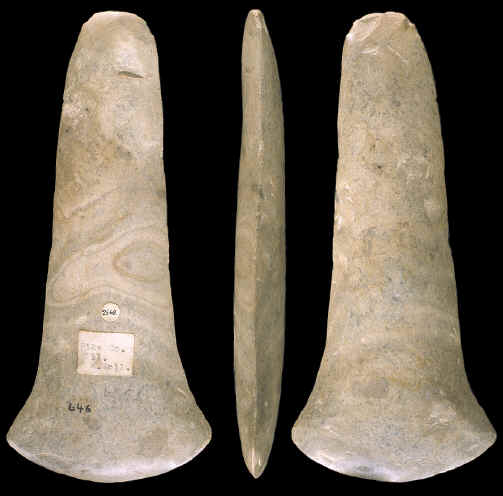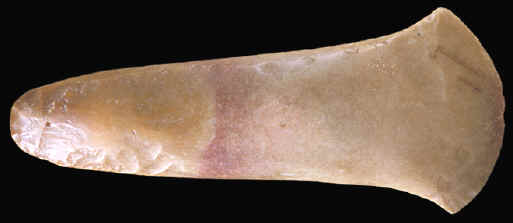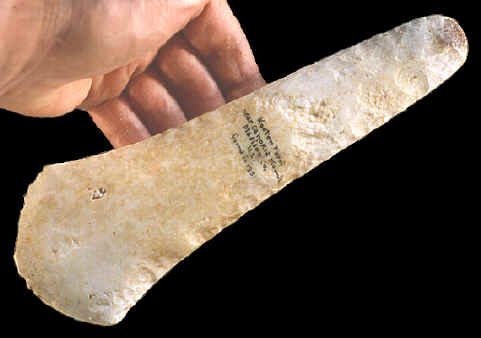|
|
|
Gerard Fowke wrote that "they (spuds) bear no marks of rough usage." B W. Stevens writes, concerning class C spuds, that "Occasionally the blade of some of these axes (he refers to them as ceremonial axes) show a small chip broken from the blade---. Many of these chips indicate that the Indian re-worked such damage, by smoothing out the chip by grinding and polishing." Many spuds do seem to have been damaged along the bit and some of them were repaired. A certain percentage of spuds were being used in a way that did cause their blade edges to become damaged. But the wear pattern on most spuds isn't the same as tools that were being used for wood working and agriculture. |
|
|
|
|
Many different theories have been suggested for the use of stone spuds. Some of them don't seem very logical. Moorehead relates some of Dr. Joseph Jones accounts he took from different people. One suggestion was that they were used in agriculture, "the flat head being employed as a spade and the round handle for making small holes in the earth for the deposit of Indian corn." Another suggestion is that "they were used to strip bark from trees." |
|
|
Some of the more logical explanations for the use of spuds fall into two categories. The most often suggested theory is that they were ceremonial or display axes that were never used for anything except for ritual events. Another explanation, at least for some of them, is that they were used as weapons. Many of the spuds illustrated in this article might be considered to be comparable to battle axes from northern Europe. The weight for a couple of the spuds illustrated here is the same as the battle axes also illustrated in this article. Dr. Joseph Jones is quoted, early in the last century, as saying "It's possible that they (spuds) may have been used-------as warlike weapons, since it would be easy to cleave or fracture the human skull with a single blow from one of these stone implements." |
|
|
|
|
More than likely, spuds were used for a number of different purposes. Some of the lesser quality spud-like objects, that might be hard to define, between a flared bit celt and a true spud were probably used as utilitarian tools. Others, especially the very large and delicate class A examples were probably ritual objects used as display items or special offerings to the dead, like Hopewell Ross blades & other exotic burial items. Still others may have been used in the same way European battle axes or metal trade axes were used, as weapons. Very small examples, between 3 and 4 inches may have been worn like jewelry or used as toys. |
|
|
|
|
Whatever anyone thinks or believes about spuds, one thing is for sure, they must have been important to the Mississippian people that made and used them. They took special care to select the best color and quality of stone. The highly developed artistic shapes and polished surfaces indicate that these items were made to impress people. Well over a thousand years later, they are still impressing people. |
|
|
"REFERENCES"
1910,
Moorehead, Warren K., "The Stone Age In North America," Vol. 1,
Chapter XXII, "Ground Stone---Problematical Forms, The Spud-Shaped
Implement," pp. 418-430. |
|




